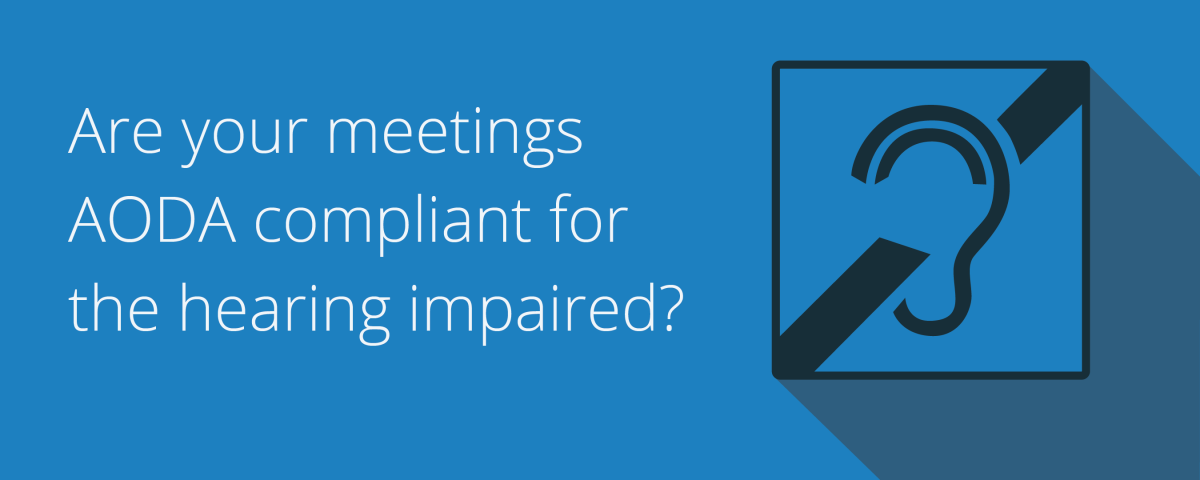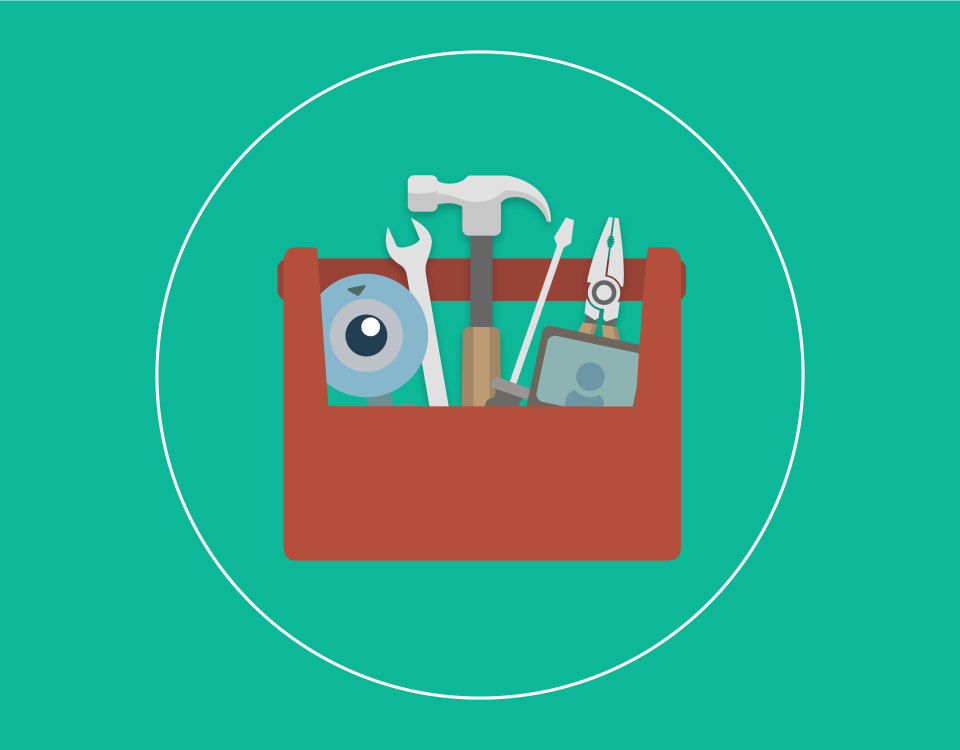- Have any questions?
- +91 425 636 0351
Are Your Meetings AODA Compliant for the Hearing Impaired?

Group Rooms Encourage Compact, Collaborative Conferencing
March 14, 2017
Step by step instructions to Easily Make the Perfect Conference Call
March 24, 2017Are Your Meetings AODA Compliant for the Hearing Impaired?

Canada has a culture of comprehensiveness, and it’s something that makes it an awesome place to live.
Canada enacts arrangements like slope access for structures to suit those in wheelchairs. Control puppies are permitted get to anyplace. Everybody ought to be capable access to all things.
In Ontario, the enactment is built into the Accessibility for Ontarians with Disabilities Act (AODA), go in 2005. It means to make Ontario completely available by 2025.
As a major aspect of this objective, it orders that all open segment associations and any private or not-revenue driven associations of 50+ representatives be completely listening-assistive before the finish of 2015. Littler organizations and NFPs should be consistent before the finish of 2016.
All associations and partnerships, open or private, need to know and take after AODA consistence.
It’s the law – and it’s the correct thing to do.
The AODA and the Rise of Hearing Impairment
Certain arrangements coming into place in Ontario for the hearing weakened in broad daylight spaces inside the following year.
There are more than a million people living in Canada that have some level of hearing misfortune today. Add to that the reality we have a maturing populace.
With 40% of Canadian grown-ups more than 75 having a noteworthy hearing issue, these arrangements speak to some genuine thinking ahead by strategy producers in this nation.
At the danger of seeming like an old individual myself, rates of hearing debilitation are additionally on the ascent among Canada’s childhood. They call it “clamor incited” hearing misfortune, as a result of all that impacted “music” they’re tuning in to.
What Are the Rules?
Suppose you’re facilitating an address for a full classroom and associating by means of video meeting to considerably more understudies.
Did you realize that it’s reasonable you’d must be AODA consistent in this circumstance?
It’s altogether laid out in the Ontario Building Code, 2012:
Article 3.8.3.7: In structures of get together inhabitance, all classrooms, auditoria, meeting rooms, and theaters with a range of more than 100 m2 and a tenant heap of more than 75 should be furnished with assistive listening frameworks incorporating the whole seating territory.
Different contemplations composed into the code that ought to be considered:
But as generally gave, each association might upon demand give or mastermind to the arrangement of available configurations and correspondence bolsters for people with handicaps, in an auspicious way that considers the people availability needs because of inability: and at a cost that is close to the consistent cost charge to different people.
The committed association should counsel that individual making the demand in the deciding the appropriateness of an open organization or correspondence bolster.
Each committed association might inform people in general about the accessibility of available arrangements and interchanges bolsters.
You need a framework set up and be prepared to suit any individual asking for assistive listening support. Also, you need signs that demonstrate that such support is promptly accessible.
Exact prerequisites
Ontario’s rules aren’t as point by point as a few. The National Building Code of Canada, which is utilized by all regions and domains with the exception of Alberta, B.C., Ontario and Quebec, separates it like this:
Kember
Credit: listentech.com
Here’s a stupendous asset: the great individuals at Listen Technologies have made an online adding machine to help you make sense of precisely what your space requires. It depends on the American ADA necessities, however it’s nearly trailed by Canadian models.
Sorts of Assistive Listening Systems
Presently, there are a couple of various types of assistive listening frameworks. Every one of them must work with, or have collectors that work with, portable hearing assistants and cochlear inserts outfitted with telecoils (or “t-curls”). With assistance from our companions at Datavisual, we have an abnormal state synopsis of what you can search for as you try to give the suitable support:
There are three sorts of assistive listening frameworks: radio recurrence (RF), Infrared (IR), and acceptance circle (hearing circle). Each of these frameworks utilizes distinctive innovation to transmit sound to an individual recipient or t-loop prepared portable amplifier.
RF: A RF framework is comprised of a transmitter, recieving wire, and recipient and works by signs being transmitted over radio frequencies. The advantages of a RF framework are:
No line-of-site issues (as in it isn’t be hindered by in-room deterrents or dividers)
Covers a wide range inside and outside
Regularly the slightest costly framework to buy and introduce
Clients with t-curl prepared listening devices can utilize RF collectors with a neck circle
So this is an extraordinary framework to agree cost-viably, however can be grabbed by those not in the gathering of people on the off chance that they have a recipient. On the off chance that security is a consider your choice, it merits taking a gander at the IR framework.
IR: An IR framework utilizes infrared light to transmit sound and is comprised of a radiator, transmitter, and recipient. The advantages of an IR framework are:
Protection and security—the flag won’t transmit through dividers
Clients with t-curl prepared amplifiers can utilize IR recipients with a neck circle
These are more costly, yet you’ll never need to stress over the sound making it outside the room. High security.
Presently, both of the above frameworks require the member to wear a recipient around their neck, which may possibly make them unsure (and the objective is comprehensiveness, all things considered). The Loop framework, portrayed beneath, dispenses with the collector if the member has t-curl prepared listening device or cochlear embed.
Circle: An enlistment circle (hearing circle) framework is comprised of a circle driver and copper wire which transmit straightforwardly to the portable amplifier or embed. The advantages of a circle framework are:
Gives a more discrete affair, on the grounds that the t-curl goes about as the recipient
There is no requirement for a client to attract thoughtfulness regarding a member’s inability
Circle collectors can be utilized to suit the individuals who don’t have a t-curl prepared listening device
For association keen on making the best understanding for all individuals included, the hearing circle is the best choice. There are no obvious beneficiaries essential for the individuals who have a t-loop (however recipients are accessible for those without).
Looking to the Future
These due date dates to consent to AODA enactment are coming soon – in the event that you haven’t yet, right now is an ideal opportunity to begin taking a gander at assistive listening frameworks.
With hearing misfortune on the ascent in Canada, associations will be hoped to suit. It’s the best thing to do, and you’ll be viewed as an idea pioneer for doing it right.
Need to take in more? There’s a free Assistive Listening and ADA Compliance online session and course, intended to share and illuminate about all things assistive tuning in.
Again – these depend on US necessities, however there is a great deal of cover. Worth a tune in!

